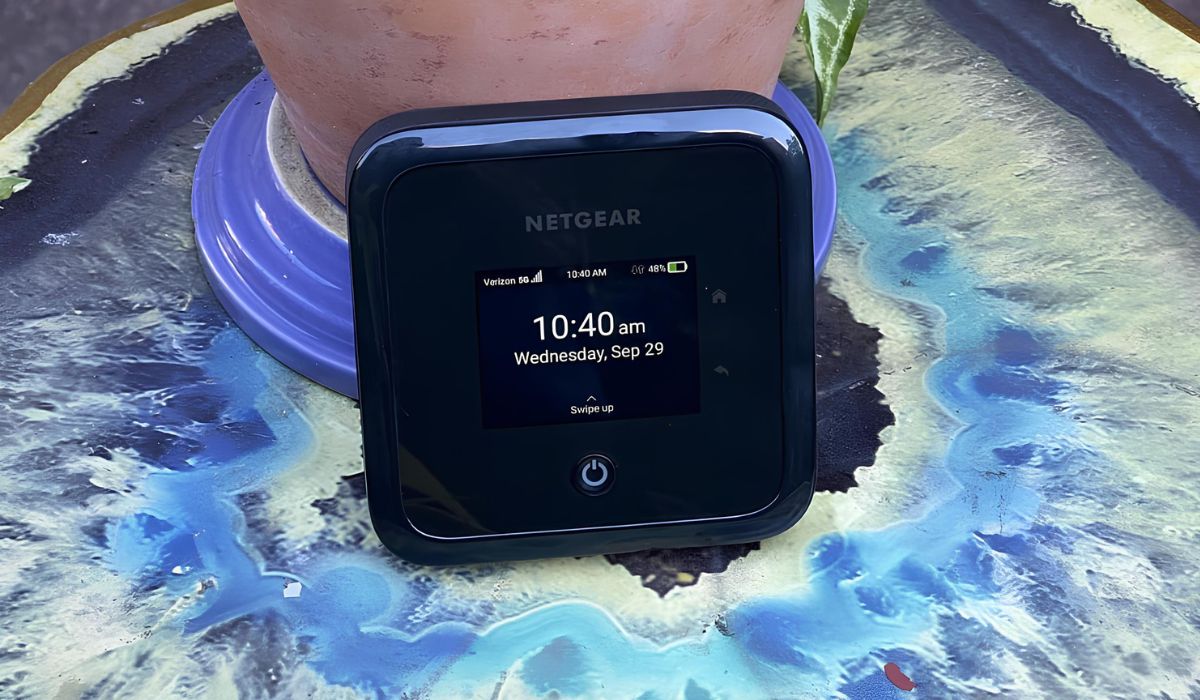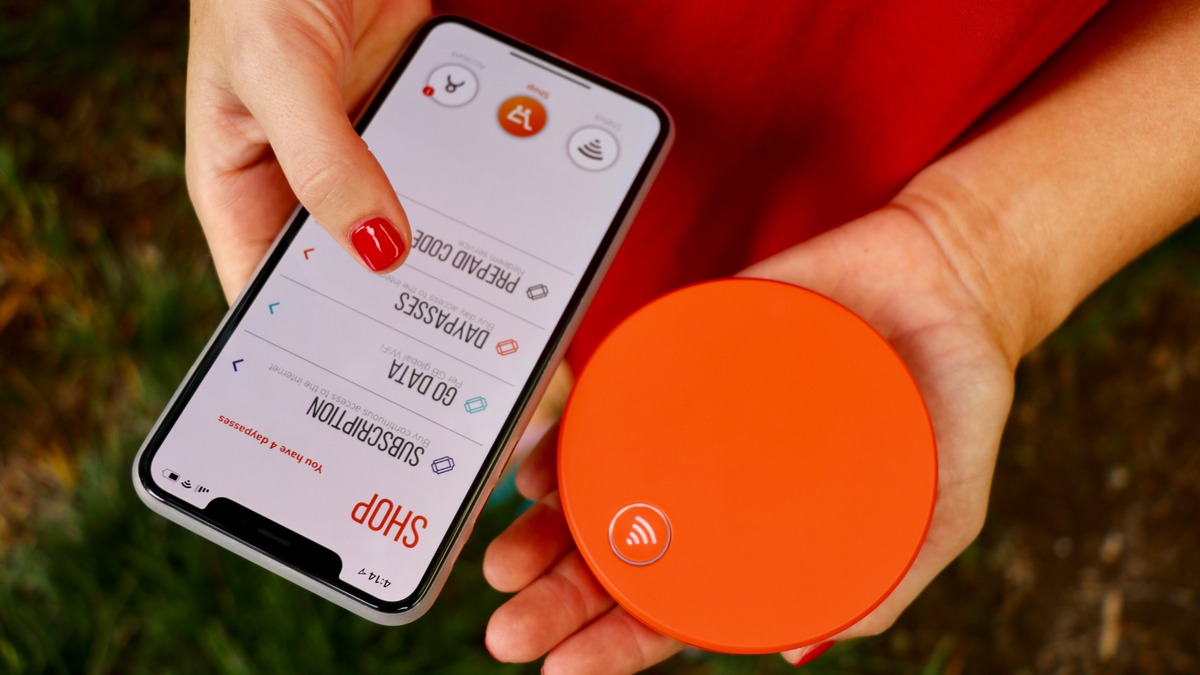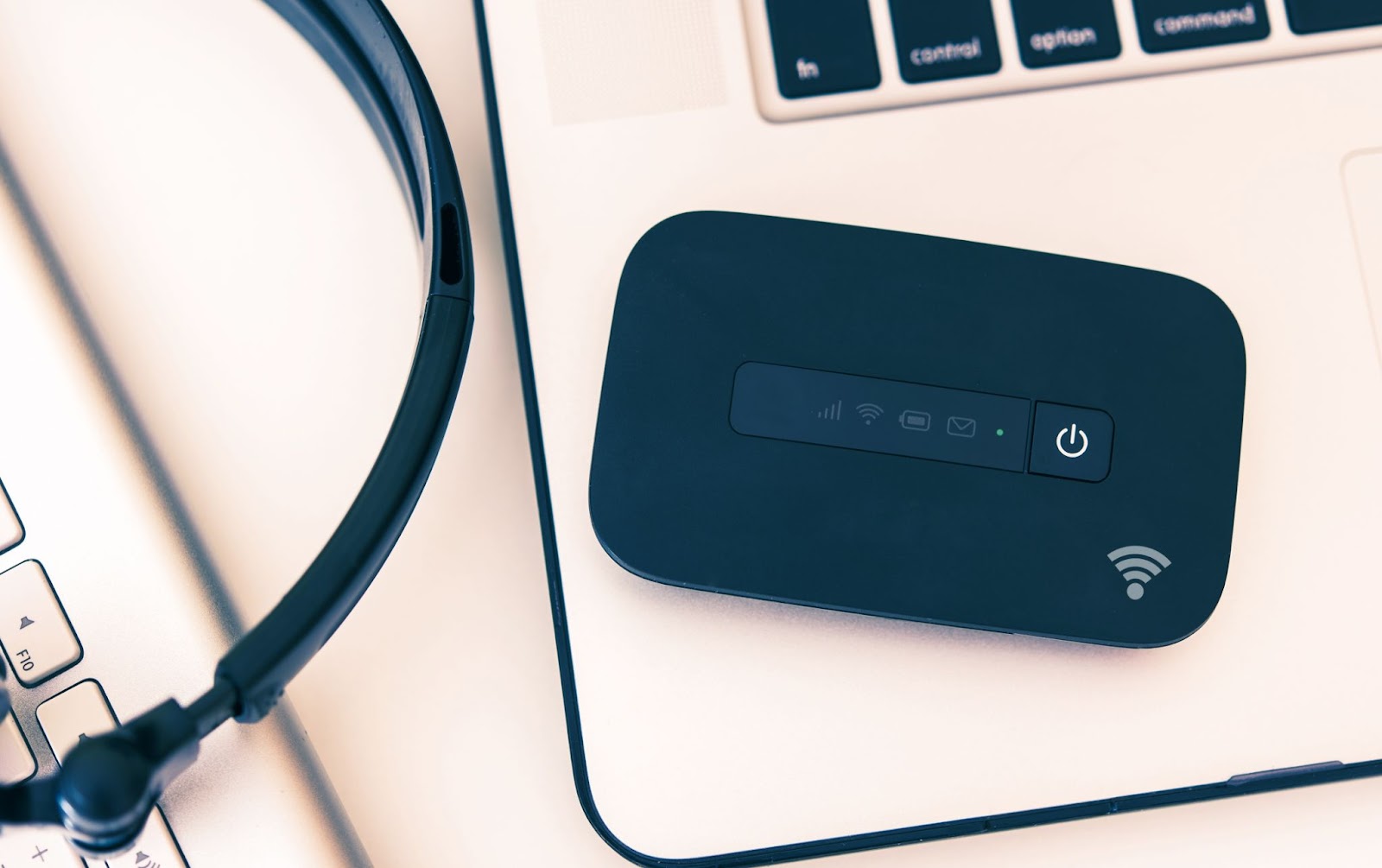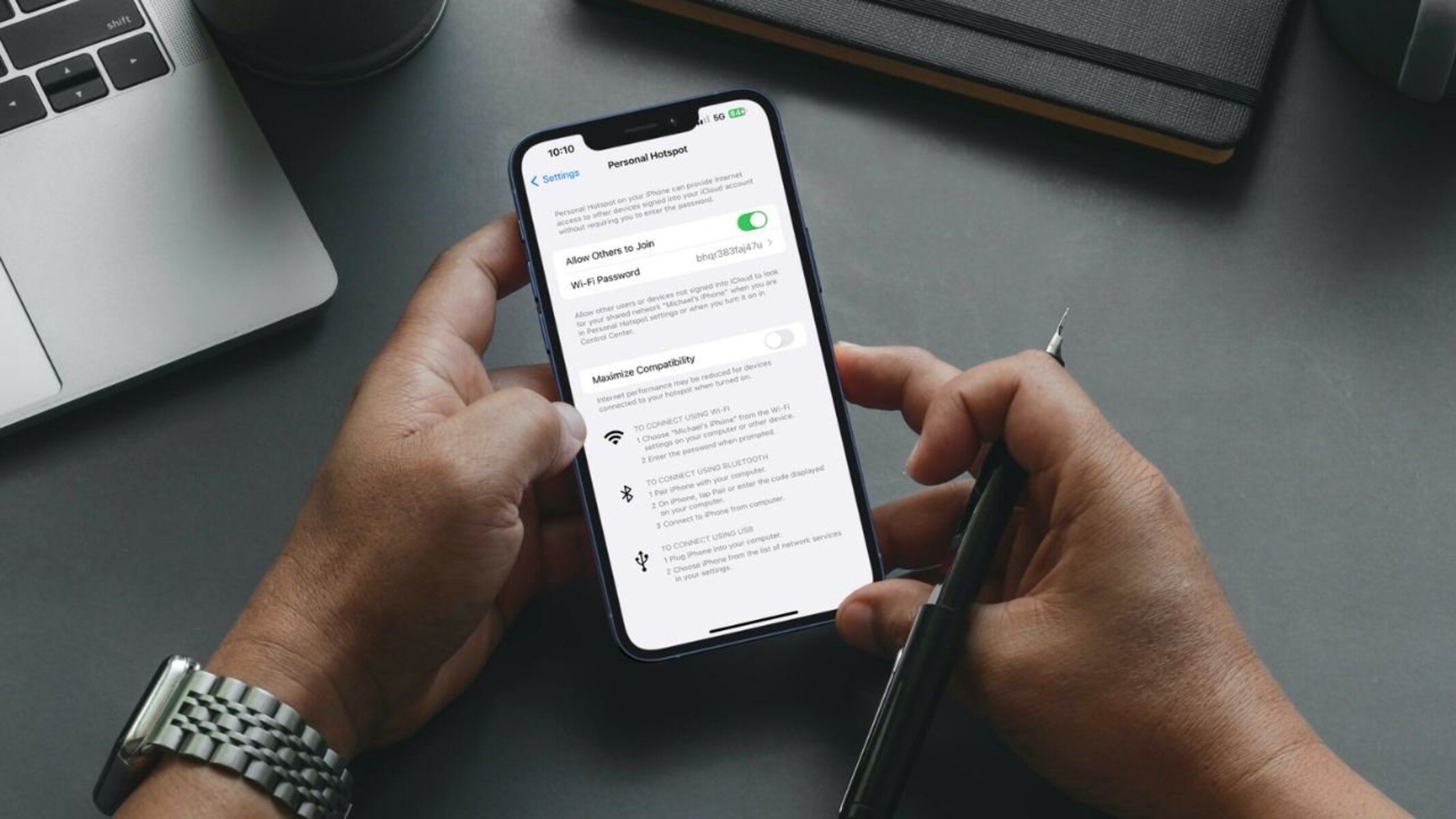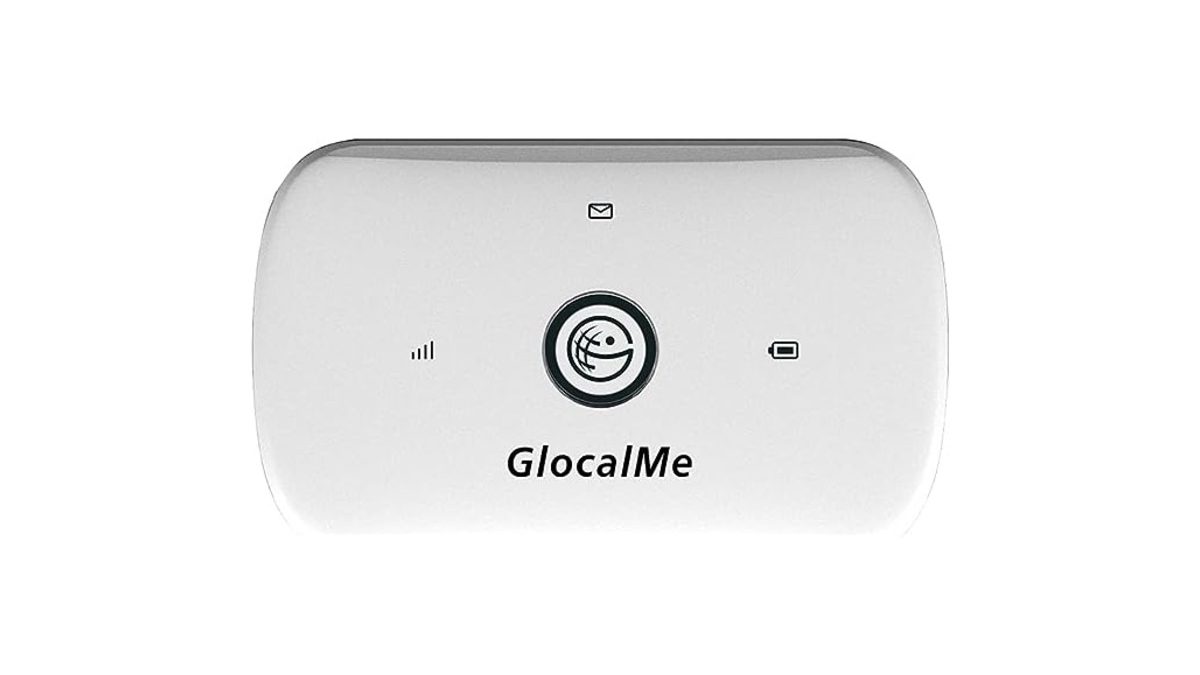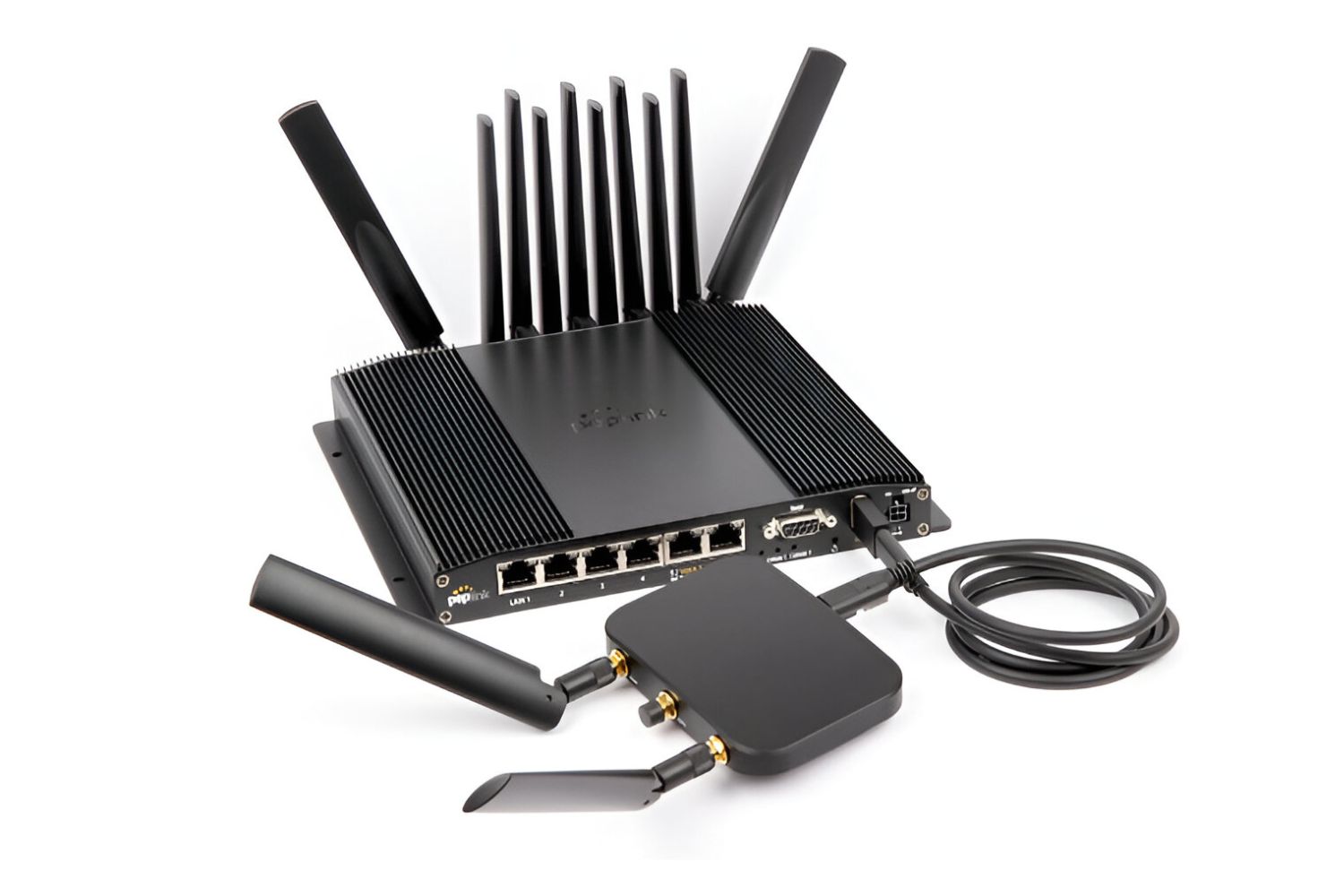Introduction
Selecting the best portable hotspot can significantly enhance your connectivity and productivity, whether you're a digital nomad, a frequent traveler, or someone who requires reliable internet access on the go. A portable hotspot, also known as a mobile hotspot or a pocket Wi-Fi, is a compact device that enables you to create a secure and convenient Wi-Fi network wherever you are. This article will guide you through the essential features and considerations to keep in mind when choosing the ideal portable hotspot for your needs.
A portable hotspot serves as a personal Wi-Fi hub, allowing you to connect multiple devices, such as smartphones, tablets, laptops, and smart home gadgets, to the internet simultaneously. Whether you're working remotely, streaming content, or staying connected with friends and family, a portable hotspot offers the flexibility and convenience of accessing high-speed internet without relying on public Wi-Fi networks, which can be unreliable and potentially insecure.
When selecting a portable hotspot, it's crucial to consider various factors, including coverage and network compatibility, data speed and performance, battery life and power options, security features, device compatibility, and cost considerations. By evaluating these key aspects, you can make an informed decision that aligns with your specific requirements and usage patterns.
In the following sections, we will delve into each of these factors in detail, providing insights into the features to look for and the considerations to keep in mind. Whether you're seeking a portable hotspot for business, leisure, or everyday use, understanding these crucial aspects will empower you to make a well-informed choice that enhances your connectivity and ensures a seamless online experience wherever you go.
Coverage and Network Compatibility
When considering a portable hotspot, coverage and network compatibility are paramount. The ability to stay connected across various locations, both urban and remote, hinges on the device's support for multiple network bands and its compatibility with different carriers.
Coverage refers to the geographical area where the service provider offers internet connectivity. It's essential to assess the coverage map of the intended carrier to ensure that the portable hotspot can deliver reliable connectivity in the areas you frequent. Whether you're traveling for work, leisure, or simply need internet access during your daily commute, a portable hotspot with broad coverage minimizes the risk of encountering dead zones or unreliable connections.
Network compatibility is equally critical, as it determines the device's ability to connect to different cellular networks. Look for a portable hotspot that supports a wide range of network bands, including 4G LTE and 5G, to ensure compatibility with various carriers. This versatility allows you to switch between different network providers based on signal strength, pricing, and regional availability, providing flexibility and ensuring seamless connectivity regardless of your location.
Moreover, the option for dual-SIM functionality can further enhance network compatibility and coverage. This feature enables the portable hotspot to accommodate two SIM cards from different carriers, allowing for automatic switching between networks based on signal strength and availability. It's particularly advantageous for frequent travelers and remote workers who may encounter varying network conditions while on the move.
In addition to network bands and coverage, the presence of advanced technologies such as carrier aggregation and MIMO (Multiple-Input Multiple-Output) can significantly improve the device's performance in areas with high network traffic or challenging signal conditions. These technologies enable the portable hotspot to harness multiple frequency bands and antennas, resulting in faster data speeds and more reliable connectivity, especially in densely populated areas or locations with limited network infrastructure.
By prioritizing coverage and network compatibility when selecting a portable hotspot, you can ensure consistent and dependable connectivity across diverse environments, empowering you to stay connected, productive, and entertained wherever your adventures take you. Whether you're exploring new destinations, working remotely, or simply seeking reliable internet access during your daily routines, a portable hotspot with robust coverage and versatile network compatibility is an indispensable companion for staying connected on your terms.
Data Speed and Performance
The data speed and performance of a portable hotspot are pivotal factors that directly impact the quality of your online experience. When evaluating these aspects, it's essential to consider the device's capability to deliver fast and reliable internet connectivity, especially in scenarios where seamless streaming, video conferencing, and large file downloads are essential.
To gauge the data speed, look for a portable hotspot that supports the latest cellular technologies, such as 4G LTE Advanced or 5G, as they offer significantly faster data transfer rates compared to older standards. These advanced technologies enable the device to achieve higher peak download and upload speeds, resulting in smoother streaming, quicker file downloads, and reduced latency, enhancing your overall online experience.
Furthermore, the presence of carrier aggregation and support for multiple frequency bands can contribute to improved data speeds and network performance. Carrier aggregation allows the portable hotspot to combine multiple frequency bands to increase data throughput, while support for additional bands ensures compatibility with a broader range of network infrastructures, enhancing connectivity in diverse environments.
In addition to raw data speeds, it's crucial to assess the device's performance under real-world conditions, considering factors such as network congestion, signal strength, and the number of connected devices. Look for a portable hotspot with advanced antenna technology and MIMO (Multiple-Input Multiple-Output) capabilities, as these features can enhance signal reception and data throughput, especially in crowded urban areas or locations with challenging network conditions.
Moreover, the presence of features like QoS (Quality of Service) and traffic prioritization can further optimize the device's performance by intelligently managing data traffic, ensuring that bandwidth-intensive applications receive priority, resulting in a smoother and more consistent online experience.
When selecting a portable hotspot, consider your typical usage scenarios and the demands of your connected devices. Whether you're streaming high-definition content, participating in video conferences, or engaging in online gaming, prioritizing data speed and performance ensures that your portable hotspot can meet the demands of modern connectivity, empowering you to stay productive and entertained, even when on the move.
Battery Life and Power Options
Battery life and power options are pivotal considerations when evaluating a portable hotspot, as they directly impact the device's usability and reliability, especially during extended usage periods or when access to power sources is limited.
The battery life of a portable hotspot determines the duration for which it can operate on a single charge, providing uninterrupted internet connectivity without the need for frequent recharging. Longer battery life is particularly crucial for individuals who engage in prolonged outdoor activities, such as camping, hiking, or fieldwork, where access to power outlets may be scarce. Additionally, frequent travelers and digital nomads benefit from extended battery life, as it ensures consistent connectivity during long journeys or when working from remote locations.
When assessing battery life, consider the device's rated capacity, typically measured in milliampere-hours (mAh), as well as its estimated operational duration on a full charge. Look for portable hotspots with larger battery capacities, as they can sustain prolonged usage without requiring frequent recharging. Furthermore, the presence of power-saving modes and intelligent battery management features can optimize energy consumption, extending the device's operational time between charges.
In addition to battery life, the availability of diverse power options enhances the versatility and usability of a portable hotspot. Look for devices that support various charging methods, including USB-C, micro-USB, or proprietary charging ports, as they offer flexibility when replenishing the device's battery. Furthermore, the option for fast charging capabilities can significantly reduce downtime, allowing you to quickly recharge the portable hotspot and resume connectivity without prolonged interruptions.
Moreover, the inclusion of a removable and interchangeable battery can be advantageous, as it enables users to carry spare batteries for extended usage periods, effectively doubling the device's operational time without relying on external power sources. This feature is particularly beneficial for individuals engaged in outdoor activities or those who require continuous connectivity in remote areas.
Considering battery life and power options when selecting a portable hotspot ensures that the device aligns with your usage patterns and provides the necessary reliability and flexibility for seamless connectivity. Whether you're exploring the great outdoors, embarking on extended travels, or simply seeking uninterrupted internet access during your daily routines, prioritizing battery life and versatile power options empowers you to stay connected on your terms, without being tethered to traditional power sources.
Security Features
Security is a paramount concern when selecting a portable hotspot, especially in an era where cyber threats and privacy breaches are prevalent. The device's security features play a crucial role in safeguarding your sensitive data, protecting your online activities, and ensuring a secure and trustworthy internet experience.
One of the fundamental security features to prioritize in a portable hotspot is encryption. Look for devices that support the latest encryption standards, such as WPA3 (Wi-Fi Protected Access 3), which offers robust protection for your wireless network. WPA3 employs advanced encryption algorithms to secure data transmission, preventing unauthorized access and eavesdropping, thus enhancing the overall security of your Wi-Fi network.
Furthermore, the presence of a built-in firewall and intrusion detection system can bolster the device's security posture by monitoring and filtering incoming and outgoing network traffic. These features act as a barrier against malicious activities and unauthorized access attempts, providing an additional layer of defense against potential cyber threats and attacks.
Additionally, the option for VPN (Virtual Private Network) passthrough support is advantageous, as it enables users to establish secure and encrypted connections to external VPN servers, safeguarding their online communications and data transmissions, especially when accessing public Wi-Fi networks or untrusted internet connections.
Moreover, advanced security features such as MAC (Media Access Control) address filtering and client isolation can further enhance the device's security by restricting access to authorized devices and isolating connected clients from each other, mitigating the risk of unauthorized network intrusions and potential security breaches.
In the context of enterprise or business usage, the support for enterprise-grade security protocols, such as RADIUS (Remote Authentication Dial-In User Service) authentication and 802.1X authentication, can be pivotal in ensuring secure access control and user authentication, catering to the stringent security requirements of professional environments.
By prioritizing security features when selecting a portable hotspot, you can mitigate the risk of cyber threats, safeguard your sensitive information, and ensure a secure and reliable internet experience, whether you're working remotely, conducting business activities, or simply browsing the web. The presence of robust security measures not only protects your data and online privacy but also instills confidence in the device's ability to provide a secure and trustworthy Wi-Fi environment, empowering you to stay connected with peace of mind.
Device Compatibility
Device compatibility is a critical aspect to consider when selecting a portable hotspot, as it directly influences the seamless integration of your connected devices with the hotspot's network, ensuring a hassle-free and versatile connectivity experience.
When evaluating device compatibility, it's essential to assess the range of devices that can connect to the portable hotspot, including smartphones, tablets, laptops, smart home devices, and IoT (Internet of Things) gadgets. Look for a portable hotspot that supports a wide array of Wi-Fi-enabled devices, ensuring that your entire ecosystem of gadgets can seamlessly connect to the hotspot's network without compatibility issues.
Moreover, the presence of advanced Wi-Fi standards, such as 802.11ac (Wi-Fi 5) or 802.11ax (Wi-Fi 6), can significantly enhance device compatibility by offering support for the latest Wi-Fi technologies and ensuring optimal performance for modern devices. These standards provide improved data transfer rates, enhanced network capacity, and better support for multiple connected devices, catering to the demands of contemporary connectivity requirements.
Furthermore, the availability of diverse connectivity options, such as Ethernet ports or USB tethering, can expand the device compatibility by allowing non-Wi-Fi enabled devices to connect to the portable hotspot, providing flexibility and versatility in accommodating a broader range of gadgets and peripherals.
In addition to device compatibility, the ease of setup and configuration for connecting new devices to the portable hotspot is a pivotal consideration. Look for devices that offer intuitive and user-friendly setup processes, enabling seamless connection establishment for various devices, without the need for complex configurations or technical expertise.
Moreover, the presence of companion mobile apps or web-based interfaces can streamline the device management and connectivity process, providing user-friendly tools for monitoring connected devices, managing network settings, and ensuring a hassle-free experience when integrating new gadgets with the portable hotspot.
By prioritizing device compatibility when selecting a portable hotspot, you can ensure that your entire suite of connected devices, ranging from smartphones and laptops to smart home gadgets and IoT devices, can seamlessly integrate with the hotspot's network, empowering you to stay connected and productive across diverse usage scenarios and environments. The seamless compatibility of your devices with the portable hotspot fosters a cohesive and interconnected digital experience, allowing you to harness the full potential of your gadgets while enjoying reliable and convenient internet connectivity on the go.
Cost and Subscription Plans
Cost and subscription plans play a pivotal role in the selection of a portable hotspot, influencing the overall affordability and long-term viability of the connectivity solution. When evaluating the cost and subscription plans associated with a portable hotspot, it's essential to consider not only the initial purchase price of the device but also the ongoing expenses related to data plans and service subscriptions.
The upfront cost of a portable hotspot encompasses the retail price of the device itself, which can vary based on factors such as brand, model, and included features. It's important to weigh the initial investment against the device's capabilities, considering aspects such as network compatibility, data speed, security features, and device compatibility to determine the value proposition offered by the portable hotspot.
In addition to the device cost, the associated subscription plans and data packages offered by service providers are critical considerations. Evaluate the available data plans based on factors such as data allocation, data speed tiers, and pricing structures to align with your specific usage patterns and connectivity requirements. Consider whether the data plans offer sufficient data allowances for your typical usage scenarios, such as streaming, remote work, or casual browsing, ensuring that the selected plan accommodates your connectivity needs without incurring excessive overage charges or limitations.
Moreover, assess the flexibility and scalability of the subscription plans, considering factors such as contract terms, data rollover options, and the ability to adjust data allowances based on evolving usage patterns. Look for service providers that offer transparent and customizable plans, allowing you to tailor your data package to align with your changing connectivity demands, thereby optimizing cost-effectiveness and minimizing unnecessary expenses.
Furthermore, consider the coverage and network quality provided by the service providers offering the subscription plans. Assess the reliability, speed, and geographical reach of the network to ensure that the selected service provider can deliver consistent and high-quality connectivity in the areas where you intend to use the portable hotspot, whether it's for local commuting, travel, or remote work scenarios.
When evaluating the cost and subscription plans associated with a portable hotspot, it's essential to adopt a holistic approach, considering the total cost of ownership, ongoing service expenses, and the alignment of the subscription plans with your connectivity needs. By conducting a thorough assessment of the cost and subscription options, you can make an informed decision that balances affordability with the desired level of connectivity, ensuring a seamless and cost-effective portable hotspot solution that enhances your digital lifestyle.
Conclusion
Selecting the best portable hotspot entails careful consideration of various crucial factors, ranging from coverage and network compatibility to data speed and performance, battery life and power options, security features, device compatibility, and cost considerations. By evaluating these aspects, individuals can make informed decisions that align with their specific connectivity needs and usage patterns, ensuring a seamless and reliable online experience wherever they go.
Coverage and network compatibility emerged as foundational pillars in the selection process, with the emphasis on ensuring reliable connectivity across diverse locations and the versatility to connect to multiple carriers. The evaluation of data speed and performance underscored the importance of advanced cellular technologies and network optimization features to deliver fast and consistent internet connectivity, catering to the demands of modern digital lifestyles.
Battery life and power options were identified as pivotal considerations, particularly for individuals engaged in outdoor activities or frequent travel, where access to traditional power sources may be limited. The inclusion of robust security features in a portable hotspot was highlighted as a critical aspect, safeguarding sensitive data and ensuring a secure online environment, while device compatibility and ease of setup were emphasized to foster seamless integration with a diverse range of connected devices.
The assessment of cost and subscription plans underscored the need for a balanced approach, considering both the initial investment in the device and the ongoing expenses related to data plans and service subscriptions. By aligning the cost considerations with the desired level of connectivity and the flexibility of subscription plans, individuals can optimize the affordability and long-term viability of their portable hotspot solution.
In conclusion, the selection of the best portable hotspot is a multifaceted process that demands a holistic evaluation of features and considerations. By prioritizing reliability, performance, security, and cost-effectiveness, individuals can empower themselves with a portable connectivity solution that seamlessly integrates into their digital lifestyles, enabling them to stay connected, productive, and entertained, whether they are working remotely, traveling, or simply seeking reliable internet access during their daily routines.







